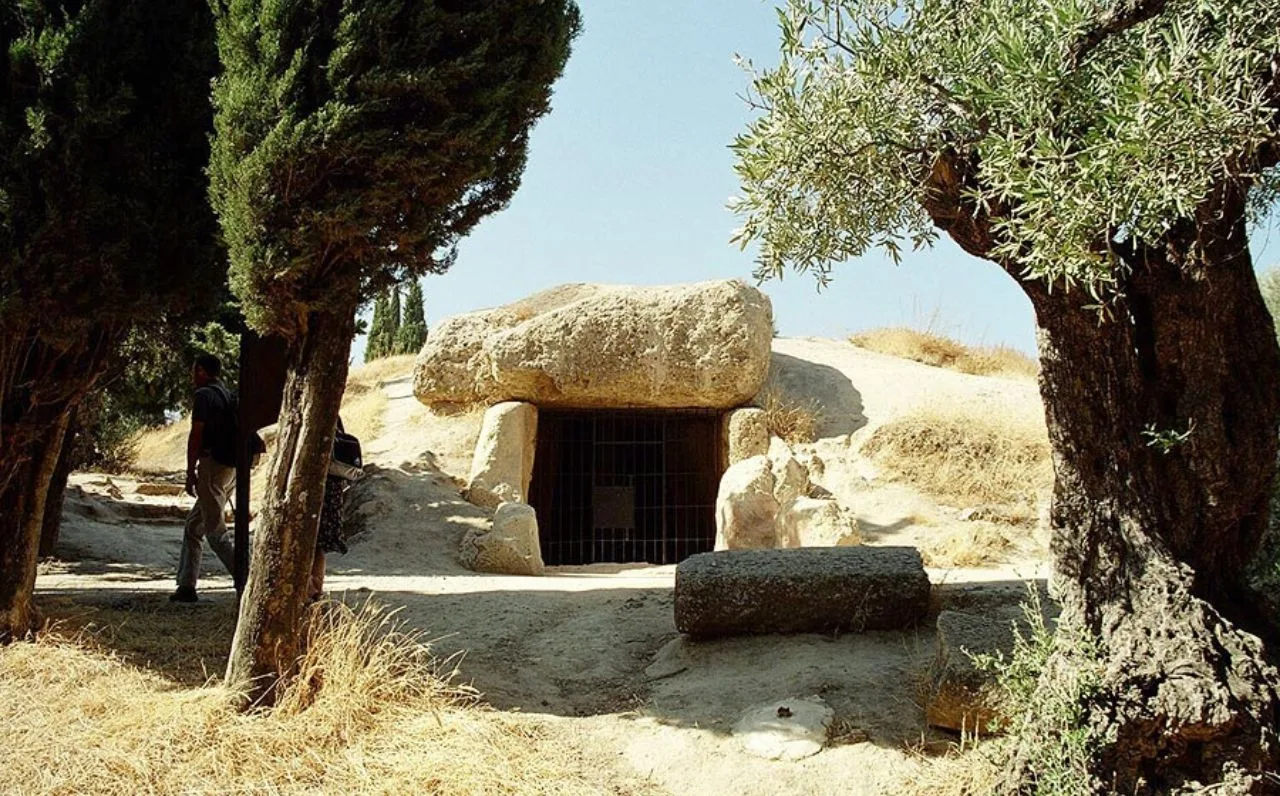The Menga Dolmen, located near Antequera in southern Spain, is one of the most significant and awe-inspiring megalithic structures from the Neolithic era. Dating back approximately 6,000 years, this ancient monument represents a remarkable achievement in prehistoric engineering, reflecting the sophistication, skill, and social organization of the people who built it.
The Menga Dolmen is a large, subterranean burial chamber formed by a series of massive stone slabs, some weighing as much as 160 tons. These slabs were meticulously arranged to create a stable, enduring structure. The dolmen measures about 27.5 meters in length and 6 meters in width, with a height of nearly 3.5 meters at its highest point. It is one of the largest known dolmens in Europe, and its construction is considered one of the greatest engineering feats of the Neolithic period.
The construction of the Menga Dolmen involved several complex processes that required a deep understanding of engineering principles and a high level of organization. The stones used in the dolmen were quarried from a site about 1.5 kilometers away. The transportation of these massive stones would have required significant manpower and ingenuity. Archaeologists believe that the builders likely used sledges or rollers to move the stones over this distance.
Once the stones were brought to the site, they were positioned with extraordinary precision. The dolmen was constructed by digging into the hillside, creating a stable foundation for the large stones. The stones were then arranged to create a trapezoidal chamber, with the walls leaning slightly inward. This inward inclination added stability to the structure, ensuring that it could support the immense weight of the roof slabs.
The use of counterweights, ramps, and levers in the construction process suggests that the builders had a sophisticated understanding of physics. The careful alignment of the stones, the use of interlocking joints, and the strategic placement of pillars within the chamber all reflect a high level of technical skill. The Menga Dolmen’s builders were not just laborers but skilled engineers who understood the properties of stone and the principles of load-bearing construction.
The construction of the Menga Dolmen would have required a large, organized workforce, indicating a well-developed social structure. The coordination of such a project would have necessitated the involvement of skilled leaders who could organize and direct the labor of a large group of people. This suggests that the society responsible for building the dolmen had a hierarchical social organization, with leaders who held the authority to mobilize and manage resources on a large scale.
The purpose of the Menga Dolmen is debated, with many considering it a burial site, but its large size and location suggest it may have also served ceremonial or ritualistic purposes. Its unusual alignment with the nearby Peña de los Enamorados mountain, which holds cultural significance, implies a spiritual connection. Unlike most dolmens oriented towards the sunrise, Menga Dolmen faces the mountain, hinting at a link between the structure and the spiritual or ancestral world.
The Menga Dolmen is part of the Antequera Dolmens Site, a UNESCO World Heritage site that includes two other megalithic monuments, the Viera and El Romeral dolmens. Together, these structures represent one of the most important megalithic complexes in Europe, providing valuable insights into the social and cultural practices of Neolithic societies.
The site’s impressive size and complexity have made it a focal point for archaeological research. Studies of the dolmen have revealed important information about the construction techniques used by Neolithic builders, as well as the social and cultural context in which the dolmen was built. The site continues to be an important source of knowledge about the prehistoric past, helping archaeologists to better understand the development of early human societies.
Recent studies of the Menga Dolmen have focused on its construction techniques, the materials used, and the possible symbolic meanings of its orientation. Advances in archaeological methods, such as 3D modeling and geophysical surveys, have allowed researchers to gain new insights into the dolmen’s construction and purpose.
For example, analysis of the stones used in their construction has provided information about the tools and techniques used by the builders. The discovery of quarry marks on the stones suggests that the builders used a variety of tools, including stone hammers and chisels, to shape the stones before they were transported to the site.
Geophysical surveys of the surrounding area have revealed the presence of additional, smaller megalithic structures, indicating that the Menga Dolmen was part of a larger ritual landscape. These findings have expanded our understanding of the dolmen’s role within the Neolithic community and its importance as a center of social and religious activity.
The Menga Dolmen is a remarkable example of Neolithic engineering and a testament to the ingenuity and skill of the people who built it. As one of the largest and most impressive megalithic structures in Europe, it continues to fascinate archaeologists and historians alike. The dolmen’s enduring presence in the landscape of southern Spain serves as a powerful reminder of the achievements of early human societies and their ability to create lasting monuments that continue to inspire awe and wonder thousands of years after their construction.
